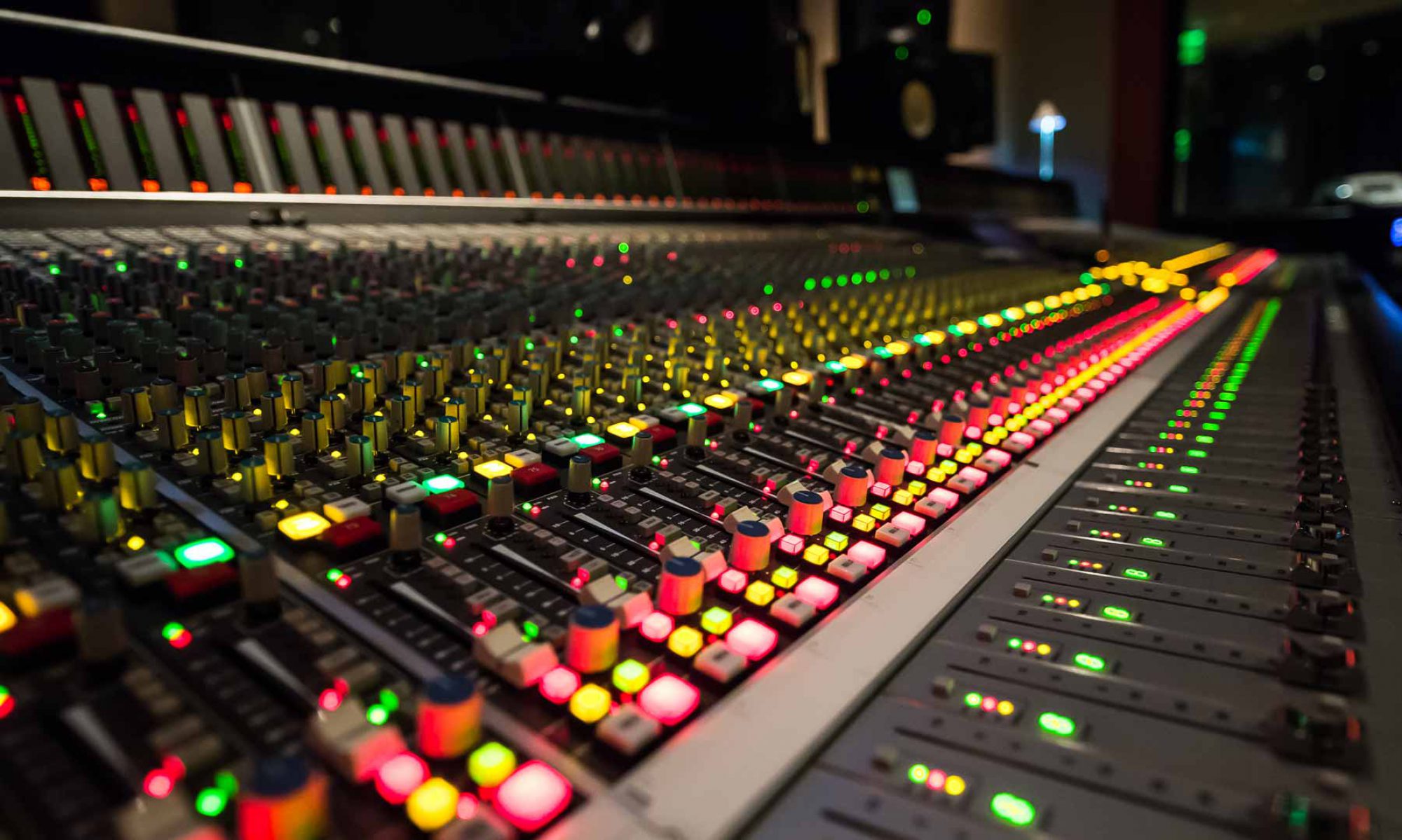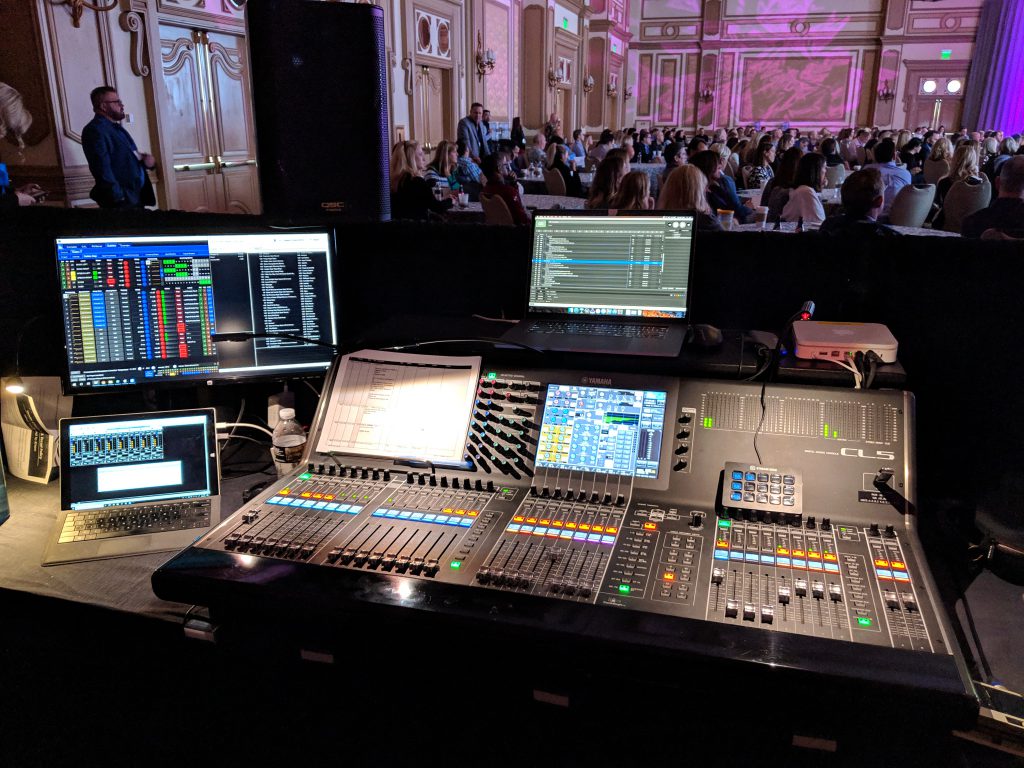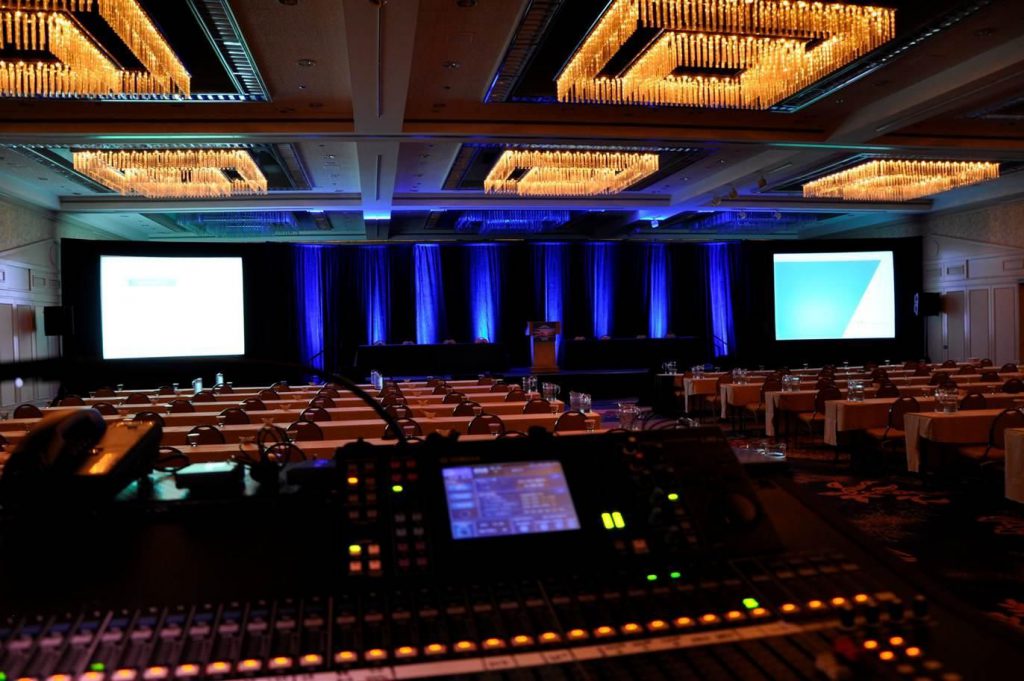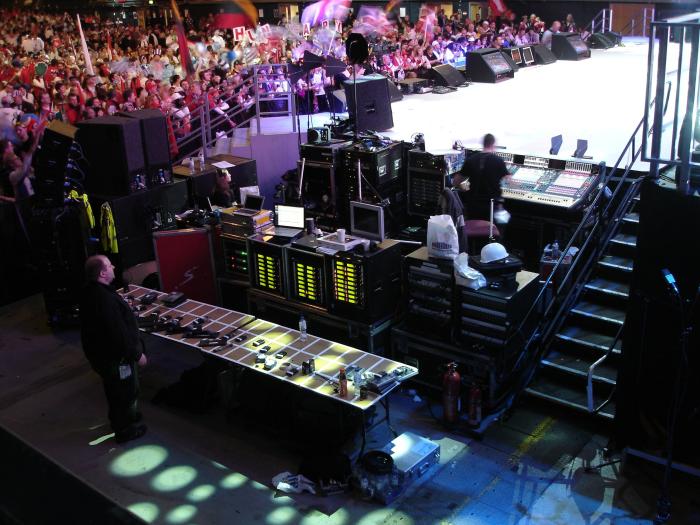After a fun week working a corporate gig I figured it was time that I address this area of audio work within my blog. We have all gotten that call from time to time; a call to do some side work for a business in town or for a corporate event away from home. There are a few things about these types of events that we will never be able to fix or avoid but there are definitely a few things that we as audio engineers can do to be able to maintain our demeanor and professional value.
The first is to remember to be flexible during setup. Often times in rooms you get to pick where the PA is (most times) and then FOH is just way off in the corner. Just be ok with that. Yes you are out of the pattern of your speakers, yes you may have to get up and walk around a bit, and yes you may be mixing from a local monitor, but these aren’t challenges that can’t be overcome. This last gig I was at left FOH on the side wall of the room, well out of the pattern of the Meyer m’elodie system I was driving. This provided the best setup for the customer and made the row of tech tables basically disappear. Not ideal but with the help of a K8 made available for me, it turned out pretty nicely. I had to walk the room quite a bit and send my A2 out to check on things occasionally but things turned out better than I thought. The other thing about corporate gigs is that the gear is often not in your control (this doesn’t mean that it’s bad, it just may not be your first choice). The best thing you can do is make the best of your situation and prove why you are getting paid to do your job. I’ve mixed on CL5s, x32s, mackie analog desks, and even an x-Air 16 at corporate events. The best thing you can do is ask what you’ll be mixing on before you arrive at the venue and be sure to familiarize yourself with that console before you get there. Things are rarely optimal but you are a professional because you can take lemons and more often than not, make lemonade.
My next big tip is to take a lot of time setting up your console. When doing an event, especially those in the corporate world, the show changes on the fly. Sometimes they called for 3 handhelds but ended up needing 4 lapels. Let’s not even get started on video playback requirements. This last event my room was given 8 wireless channels (that’s a lot for one room) and based on what was projected to happen each day it was going to be a bit crazy for my A2 managing it all. To be ready for anything, I double patched each input (one to a channel setup for a handheld, one to a channel setup for a lapel). This way, no matter what they call for, I’m setup and ready for anything in regards to wireless. I don’t need to load presets or recall settings. Everything is ready. Utilizing groups and matrices to your advantage to gain post processing (i.e. setting up an extra GEQ that does narrowband feedback elimination) or getting a dugan automixer setup is well worth whatever time you spend during setup. Additionally, setting up both stereo and split track playback channels in advance can only help you down the road. The key here is to just take your time. Get it done right and get it tested so that when you’re in the heat of the event, you’re not trying to slam something together at the last minute. The last trick I’ll mention in regards to console setup is one I just recently learned. Separate out your speech inputs from everything else. Send them to your PA from a different buss than your master so that you can an extra level of control in regards to these inputs. The benefits here, if you can do it, are extra processing, an extra layer of protection in regards to issues, and some more that are just hard to explain here. Next time you do an event, if you can send a separate stereo pair to your processor, do it and send your speech buss to your processor that way. If you’re more curious about this, drop me a message either here or on facebook and I’ll elaborate a bit more.
Lastly, use every tool and monitoring device you can get your hands on. If you have a laptop that you can travel with, bring it with you. If you have a smaart or trend rig you can utilize, do it. If there is a network jack on any of the gear you use, turn it on, getting working, and use it. At my last show we were using Meyer system processors so I had that pulled up and found myself making more tweaks and muting the inputs more often than I’d expect which allowed me to follow and support needs much easier. We were also able to setup wireless workbench to help with RF coordination and monitoring efforts throughout the event which made tracking which wireless packs/handhelds were out and keeping an eye on battery levels a breeze. Bringing along an outboard audio device always helps ensure you get clean audio from your laptop as well. If you’re on a mac, snag a PC DI from radial (mac, specifically mojave, doesn’t like the radial usb box) and if you’re on a pc snag the radial USB DI. Finally, know which audio playback apps you like using the best and come with those loaded and ready. No matter what OS I’m on, I prefer Foobar for track playback (that is if I’m not using Spotify). With a customizable interface and tons of options, it has been nothing but stable. For a quick setup Soundboard has been great in the past but I recently started using qlab (especially for this last event, the free version does just about everything you need) to build shows that require more complex timings or triggers. This last event I worked, I started in Soundboard, than switched a few of the sessions over to qlab after rehearsals as they got to complex for soundboard. If you have time to figure stuff out and plan, use qlab, if not, Soundboard is a great app to pull it together at the last minute. Both give you the ability to edit and insert fades before and after playback.
Well that’s it for this week. Hopefully you’ve picked up a few tips for your next corporate or more formal church event. Be sure to reach out to my email (daniel@studiostagelive.com), utilize the comments below, or message me on facebook if you have any questions about anything I’ve said here. I’ve finally had a chance to compile and edit videos from our recent Night of Worship so next week will be another episode of From the Booth featuring that event. Be sure to subscribe to my blog at this link so you get an email anytime a new post is released. See you next week!




Hello, could you elaborate a little bit more about separating out speech inputs from everything else? Do you mean sending speech inputs to different bus in console to gain additional bus EQ etc. and then hit master bus or just sending these inputs directly to secondary stereo output and essentialy having 2 master faders (one for speech, second for the rest) or actually making both at the same time?
So it’s a bit of both. You send the speech to a different buss or group (usually gaining an extra parametric EQ, perhaps a GEQ) and then from there straight to the processor. You hit the nail right on the head, it’s like a second master. One of the benefits I utilized a lot was muting the master if I needed to set audio cues for VO or playoff during a speech so I could be sure that audio would only go to my headphones and no where else.